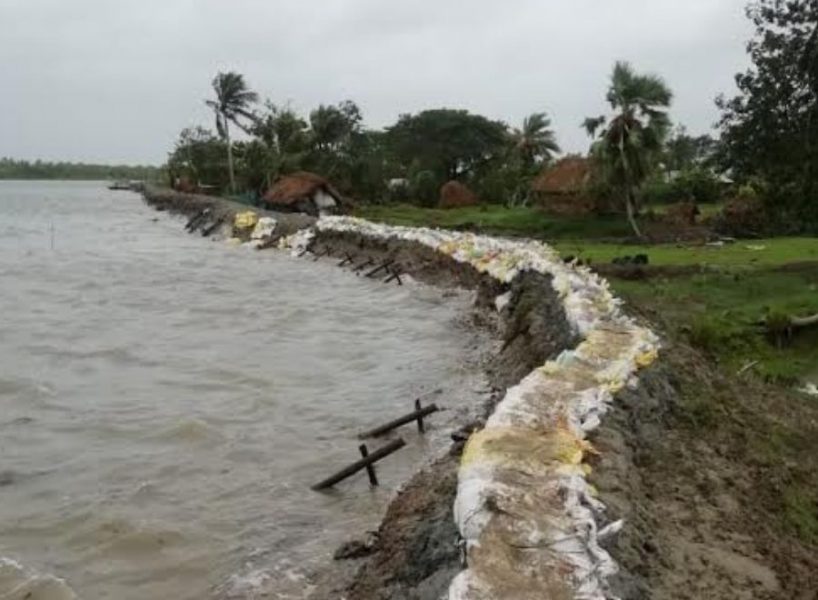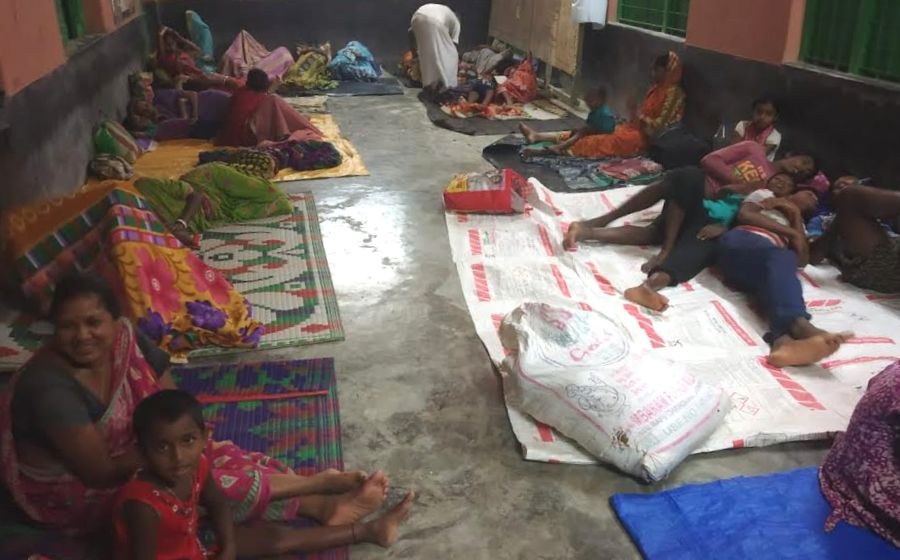
Mamata braces for political storm as Amphan leaves behind trail of destruction

At least 13 persons were killed and many were rendered homeless as cyclone Amphan slammed into India’s eastern coast on Wednesday (May 20) afternoon.
Many villages in West Bengal were flooded as high tides breached embankments in worst-hit districts of East Midnapore, South 24 Parganas and North 24 Parganas. Though the extent of damage caused to croplands, houses and fish farms could not be ascertained yet, Chief Minister Mamata Banerjee said the state had been ravaged by the cyclone.
The Chief Minister had been monitoring the situation from a control room set up in the secretariat. She wore a devastated look of a general, who had just lost a battle. “Several embankments have been ruptured and fields were deluged,” she told the media in an uncharacteristic dejected tone.
To take stock of the situation, she convened a meeting of the state’s task force on Thursday evening. “It will take three to four days to make a preliminary assessment of the losses caused by the cyclone,” she added.
The secretariat also bore the brunt of the cyclonic storm. “Even our office has been ravaged,” she informed.
“The last time that the city witnessed such a severe cyclonic storm was in 1737. I was in the war room… My office was quaking… Dealt a very tough situation on a war footing. This (storm) will continue until midnight,” she said.
She also said at least 10 to 12 persons were killed. However, the police control room could confirm the death of only three persons until 9 pm. But the police said the death toll would go up as more reports from the district poured in.
The chief minister said several houses, swathes of paddy fields, innumerable electric posts were damaged while many ponds were destroyed across the state. “Don’t know how to start the rebuilding process,” she sighed.
Moments later, regaining the composure, she added, “We can overcome this crisis with your (people’s) support and blessings.”
She also urged the Centre to help the state without any political bias. “My appeal to the central government will be please don’t take it as a political issue, consider it as a humanitarian crisis.”
A 13-year-old girl, Laxmi Kumari Sau, was killed when a tin roof came crushing on her head, while 56-year-old Nurjahan of Barasat died when a coconut tree fell on him. Identity of another person who died in North 24 Parganas is not known yet.

Deputy director of India Meteorological Department in Kolkata Sanjib Bandyopadhyay said the landfall started at 2.30 pm. The eye of the cyclone was 30 km in diameter and the landfall process continued for about four hours.
It caused major destruction in the state’s Sunderbans area. Several mud houses were flattened, uncountable trees were damaged and embankments were breached as winds ripped through the marshy delta at a speed of 140-150 kmph.
Communications were snapped and power supply was cut in several places across southern parts of the state through which the cyclone raged.
Fuelled by the warm waters of the Bay of Bengal, Amphan is considered as one of the most powerful cyclones to hit the eastern coast in decades.
The storm pounded Kolkata with full force later in the evening with the city measuring the wind speed of over 100 kmph. Uprooted trees blocked many streets in the city that encountered gushing winds and heavy rains since afternoon.
As the winds blew apart trees, tin and asbestos roofs, and raged mud houses, many who were initially reluctant to move to relief centres apprehending that they might pick-up the coronavirus there, made a last-minute dash.
Related News: As cyclone Amphan makes landfall, heavy rain lashes coastal Odisha
One such villager was Narain Mandal of Kachukhali in Goasaba who moved to a nearby cyclone-relief centre only after the storm blew off the thatched roof of his house. Mandal said he was scared to be huddled together at the centre as social distancing could not be maintained there.
Emergency response got complicated with the ongoing COVID-19 pandemic as many were initially reluctant to move to crowded shelters apprehending that they might pick up the deadly virus there.
Hundreds of cyclone centres built along the state’s coast have already turned into COVID-19 quarantine centres, forcing the government to requisition school buildings and to pack them with more than their capacity.
Amphan weakened from a super cyclone to an “extremely severe cyclonic storm” on Tuesday (May 19) as it advanced towards the Indian coast. It could cause severe damage to farmers if tidal seawater enters villages as it will make fields uncultivable for years.
Cyclone devastates Odisha
Cyclone Amphan wreaked havoc in Odisha, killing at least three people. A three-month-old baby had died in the city of Bhadrak, while a 67-year-old woman had died in Kendrapara. However, the cause of both the deaths is yet to be ascertained, Orissa Post reported. A woman was killed in Balasore district after a utility pole fell on her.
The state also witnessed heavy downpour and gusty winds. The cyclone uprooted numerous trees, which blocked road communication and power supply in Bhubaneswar and Jagatsinghpur. Around 1.37 lakh people have been evacuated so far.
Amphan is the second strongest storm on the Bay of Bengal since the 1999 Odisha super cyclone, according to the Met department. At the time of landfall at Digha, some 182km south of Kolkata, the intensity of the storm was 160-170 kmph, gusting to 190 kmph.
Aila, a severe cyclonic storm that had ravaged the Sunderbans in 2009, had winds blowing at 110kmph during landfall.
If the chief minister’s body language was any indication, then surely after the storm calmed in the midnight, the state would wake up to a massive trail of devastations left behind by Amphan on Thursday morning.
The destruction will then trigger a political storm. More so as the state government needs to answer as to why it did not take adequate precaution to reinforce the embankments even after getting sufficient time to get its acts together.

